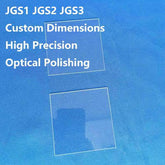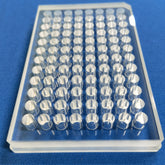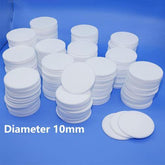Optical uniformity of quartz glass
An important index of the optical quality of fused quartz is optical uniformity. As a key index for measuring optical quality, optical uniformity directly reflects the consistency of the refractive index within a material. When light passes through quartz glass with different refractive indices, a distortion effect similar to ripples on the surface of water occurs, which can lead to a blurred image or uneven distribution of laser beam energy in high-precision optical systems.
Key factors affecting optical uniformity include metal impurities, which raise the local refractive index like “foreign matter”, and hydroxyl (water molecules), which have the opposite effect. For instance, an increase of 100ppm in hydroxyl content results in a decrease of approximately 0.0001 in the refractive index, a critical factor for optical components that demand precise regulation of the optical path. Furthermore, the presence of microscopic bubbles and unmelted particles within the glass can generate lens-like effects, thereby altering the trajectory of light.

By improving the manufacturing process, optical uniformity is greatly enhanced. The impurity content of synthetic silica glass is two orders of magnitude lower than that of fused silica due to the vapor deposition technology, and its optical uniformity can reach 3-5 times that of fused silica. The high temperature homogenization treatment by vacuum pressure furnace (usually 1300℃, 0.5MPa pressure for 20 hours) is an effective method of eliminating more than 95% of microscopic bubbles and increasing the uniformity of hydroxyl distribution by 70%.

With regard to the methods of detection, in addition to the conventional parallel optical tube method, contemporary optical laboratories are now adopting advanced holographic interferometry technology. This technology possesses the capability to directly visualize the refractive index distribution map of the entire glass, thereby achieving a detection accuracy of 10-6. In the manufacture of lenses for semiconductor lithography machines, the optical uniformity error of fused silica must be less than 5 parts per million, which means that the refractive index variation in 1 metre thick glass must not exceed 1/500 of the diameter of a human hair.






